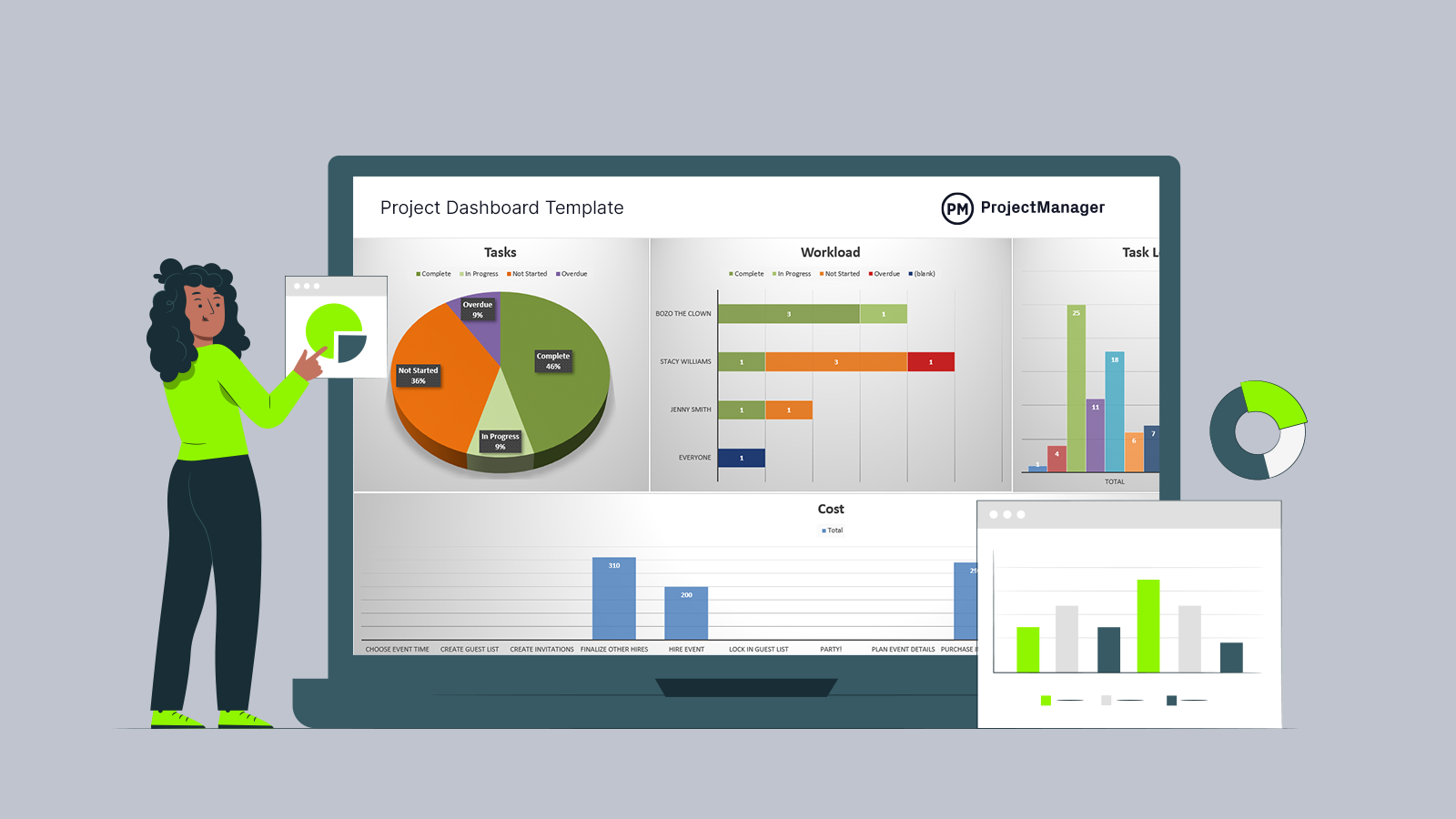
ProjectManager
by Camilo Tristancho | Jun 28, 2023Projects are divided into phases to make them more manageable. All are important, especially project monitoring. Project monitoring and control is how a project manager ensures the plan they’re implementing with the project team goes off without a hitch.
Project controlling involves a lot of steps to thoroughly monitor the project schedule, resources and costs. There are project monitoring tools, of course, but like everything in project management, there’s a process that we’ll explain.
Before we get to the steps to monitor your project, let’s put the concept into context. There are five phases in the project management process: initiation, planning, execution, monitoring and controlling and closing. Project monitoring and controlling occur in tandem with the execution phase in the project life cycle.
Project monitoring and control is a project management phase that’s dedicated to measuring project performance and making sure that it adheres to what’s been set in the project plan. Project managers will closely track the progress and performance of the project, review project status, identify potential problems and implement corrective actions when required to keep the project on schedule and within budget.

Use this free Project Dashboard Template for Excel to manage your projects better.
Download Excel File
Project monitoring and controlling are so important to project management that it’s one of the five project management processes. As noted, project monitoring goes hand-in-hand with project execution to ensure that as tasks are being completed they’re staying on schedule and keeping to the project’s budget.
Besides keeping a project on schedule and avoiding overspending, project monitoring is also a great way to manage risk and avoid scope creep. By tracking various metrics, a project manager can identify risk earlier when it shows up in the project as an issue. Earlier detection means earlier mitigation. The same is true with scope creep. When changes are applied to the project, control procedures like change requests can help keep them from negatively impacting the schedule.
To neglect project monitoring and control is to leave your project in the hands of fate. Maybe it’ll all come together, maybe not. But that’s not what a project manager is supposed to do. They not only plan the project and assign the team, but they’re also responsible for making sure the team executes its tasks in accordance with the project schedule without adding unnecessary costs.
To find problems in the project, you need project management software that can monitor progress and performance as it unfolds. ProjectManager is award-winning project management software that gives you the tools you need to monitor and control projects in real time. Project managers can get a high-level view of their project by toggling over to the real-time dashboard. It automatically collects project data on metrics such as time, cost, workload and more, which are displayed in easy-to-read graphs and charts. Unlike lightweight software, there’s no time-consuming setup necessary. Our dashboard is ready when you are. Get started with ProjectManager today for free.
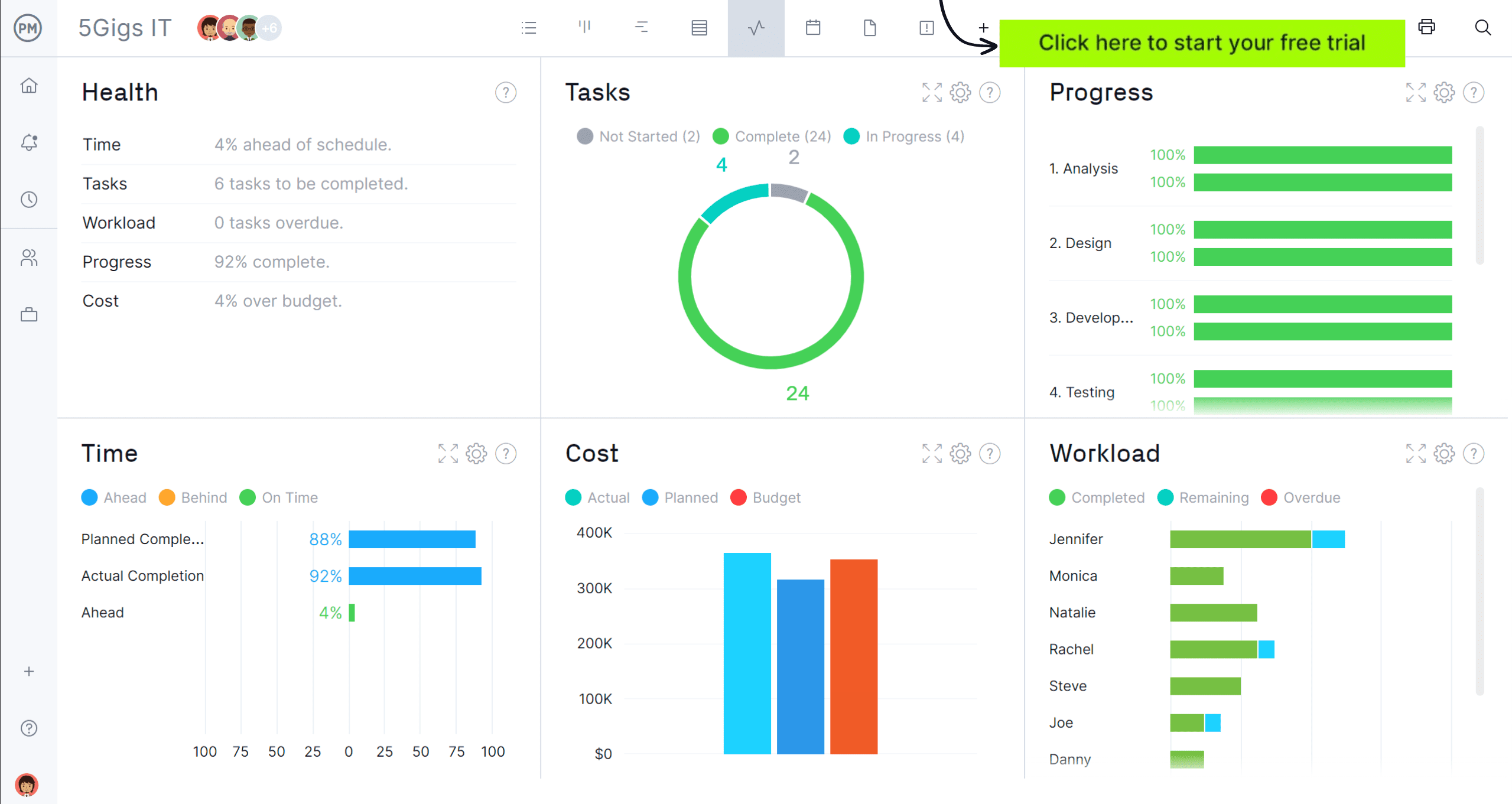
Once the project manager has scheduled tasks and created a project plan that the project sponsors approve, it’s time to move on to the project execution phase. As defined above, project monitoring is done together with the project’s execution in order to make sure the project is executed as per the schedule and budget. Below are the eight steps to take to ensure that you’re properly monitoring the project.
A project scope defines the expectations and requirements of the project stakeholders. It’s used throughout the project to monitor progress. A project scope baseline captures those expectations and requirements and can be used to measure the planned effort against the actual effort to ensure that the project execution aligns with the project plan. The scope baseline can be reviewed and revised during the project, but only through a formal change control process to avoid scope creep.
When your schedule has been approved by key stakeholders, save it. That’s called a project schedule baseline. That can then be used throughout the project like a scope baseline, but in this case, it’s used to compare your actual progress against your planned process. This allows project managers to track project variance and take corrective action to get the project back on track. It also helps with stakeholder communication, as they’re always interested in if the project is on schedule. A project schedule baseline is another necessary project control.
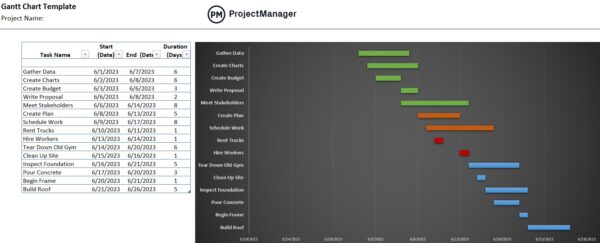
The more accurate your project costs, the more accurate your project budget. Once you’ve submitted a budget and it’s been approved by stakeholders, the last thing you want to do is request more funds to deliver the project. There are various techniques you can use to accurately estimate costs and plan your budget accordingly. Now, you’ll want to monitor all project expenses and use change control systems to track the project costs and respond to any discrepancies. You can also make a baseline of the budget to use that to compare actual against planned costs as a way to monitor spending.
One of the most important things to look for when monitoring a project is risk. During the planning phase, you can create a risk log that collects the risks you think might show up in the project. Then you can note the risk’s potential impact on the project and who’s responsible for identifying and mitigating it. You can also set priorities to help determine which risks must be dealt with immediately or if they can wait. While you’re monitoring the project, the risk log will help you stay alert for issues that are likely to impact the project, whether for good or bad. If an issue is identified, you can respond quickly and effectively.
![]()
Project monitoring is all about detecting change. When you do, you’ll need a change log to control it. A change log is a document that chronologically lists the changes that have been made to the project. This acts as a summary of the changes you’ve made and allows project managers to track and communicate all the changes that have occurred. This also gives project managers another communication tool to keep project stakeholders informed so they understand the changes that occurred and that they were properly managed.
The importance of delivering projects on time and within budget is often discussed, but don’t neglect the importance of quality. If the product or service doesn’t meet quality expectations, it’s a failure. Quality control procedures ensure that the product or service is tested and meets the standard set in the project planning. It also works to reduce errors. Therefore, establishing quality control procedures is a key part of any thorough project monitoring.
Project monitoring tools are essential for project monitoring. Project management software has many features that give project managers a window into the project, whether costs, resources or time. There are dashboards that provide a high-level view of the project’s progress and performance, detailed status reports and other types of reporting to get more information and even resource management features to track your team’s performance. Be sure to look for a project management software that has these features and is cloud-based so you get real-time data for more insightful monitoring.
We just touched on project reports, but they deserve more detail. Project reports provide a description of the current state of the project. Status reports capture data for a specific period of time, while portfolio status reports do the same but for multiple projects. However, there are more reports on project variance, workload and more. All reports are important to monitor the project and should be shared with stakeholders to update them on the project.
This free project dashboard template for Excel helps you track tasks, workload allocation, due dates and costs. Simply enter your project data and monitor your project’s progress at a glance.
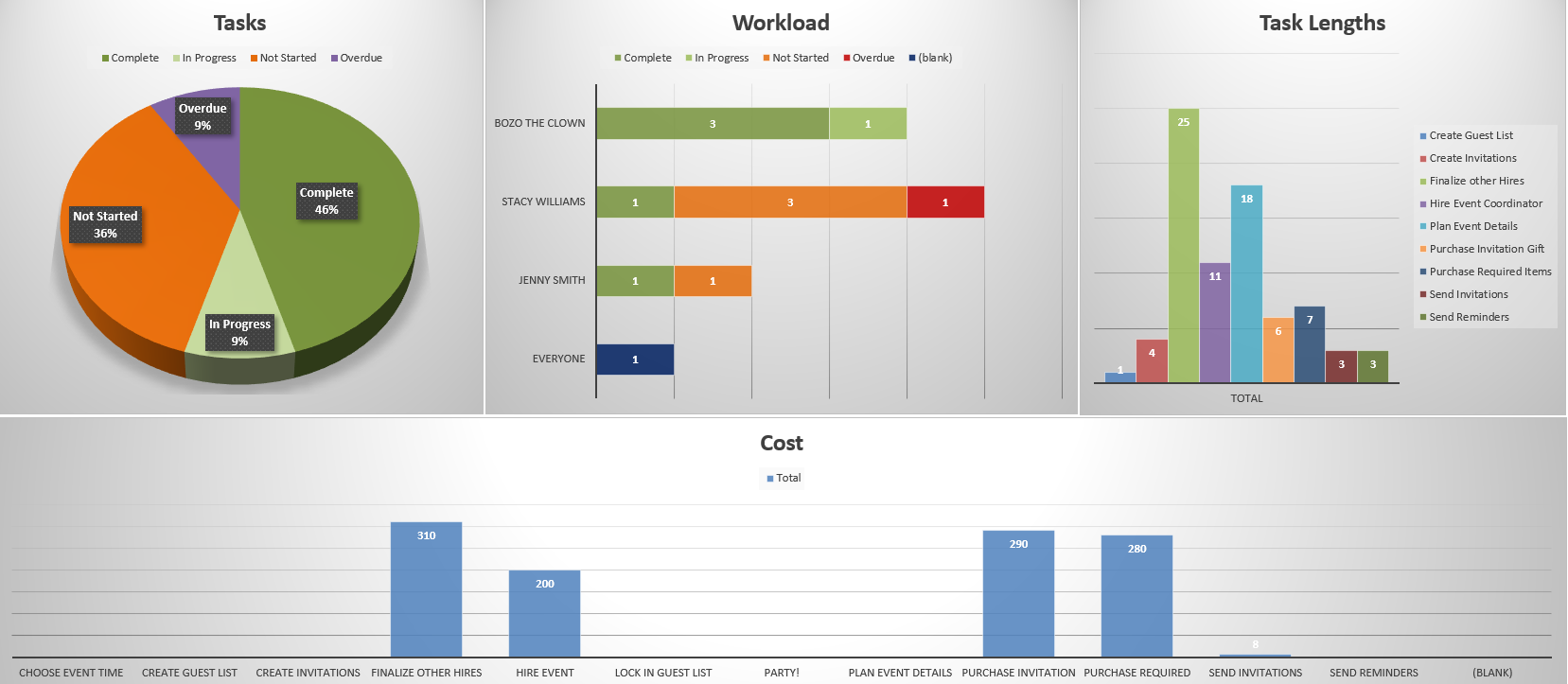
However, project management templates for Excel can’t compete with an online project monitoring software such as ProjectManager.
ProjectManager is online project management software with the tools project managers want to monitor and control their projects. Our software delivers real-time data so you’re seeing the project as it is, not as it was. Plus, our collaborative platform keeps everyone connected, whether they’re in the office, in the field or anywhere in between. This facilitates communication and issues are quickly identified and resolved to keep the project on track.
Dashboards are great when you need a high-level overview of the project, but when you want to dig deeper into the data use our customizable project reports. Just a couple of keystrokes generate reports on project or portfolio status, workload, variance and more. All reports can be filtered to show only the information you want to see. Not only can project managers monitor their projects, but every report can be shared in a variety of formats or printed for stakeholder presentations.
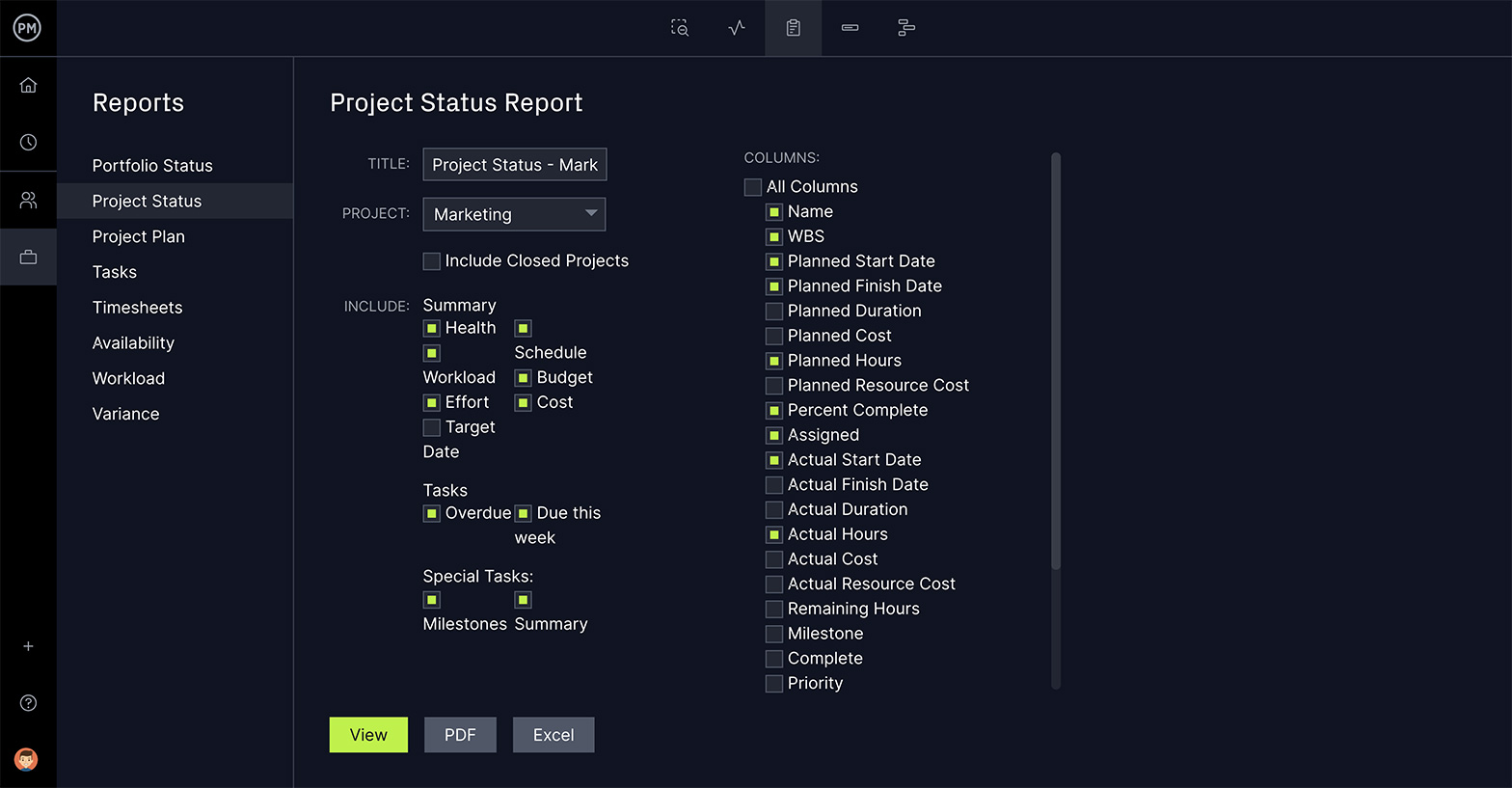
Monitoring your resources, whether that’s your team, materials or equipment, is an important part of the project monitoring process. Our resource management tools have a color-coded workload chart to easily see who’s overallocated. You can reallocate tasks from that chart and balance the team’s workload to keep them working at capacity. Team productivity helps keep you on schedule. You can also use our secure timesheet tool for more than streamlining payroll, but also to see the team’s logged hours and ensure they’re keeping to the project plan.
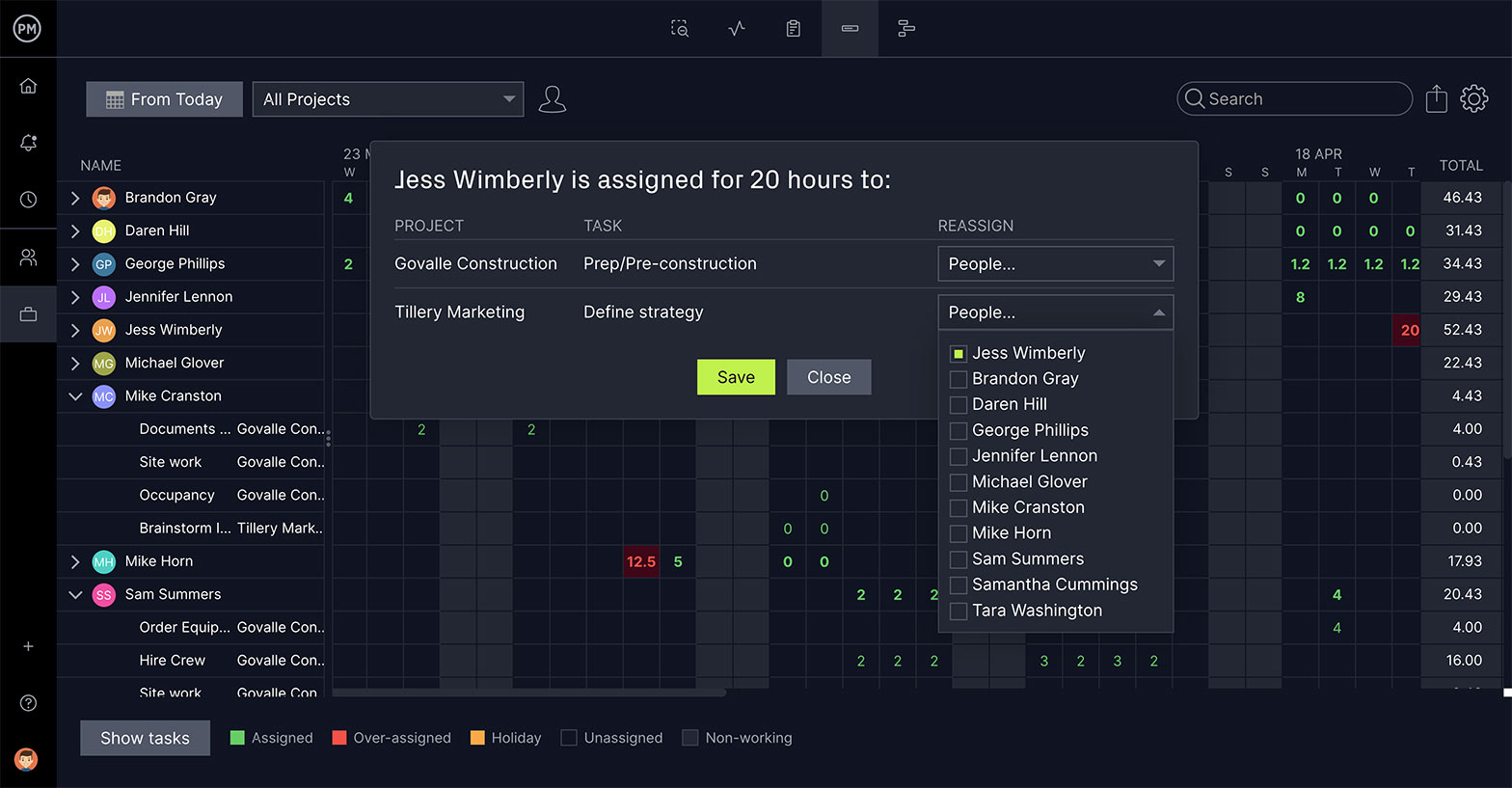
ProjectManager has multiple project planning views that allow everyone to work on the tool they prefer. Whether it’s the Gantt chart, kanban board, task list or calendar view, all data is updated in real time simultaneously allowing everyone to work together. We also have risk management features to help you identify and track project risk to avoid going off schedule.
ProjectManager is award-winning project management software that empowers teams to plan, manage and track their projects in real time. Our many monitoring and controlling features mean that project managers are always on top of change and managing it throughout the project’s life cycle. Get started with ProjectManager today for free.